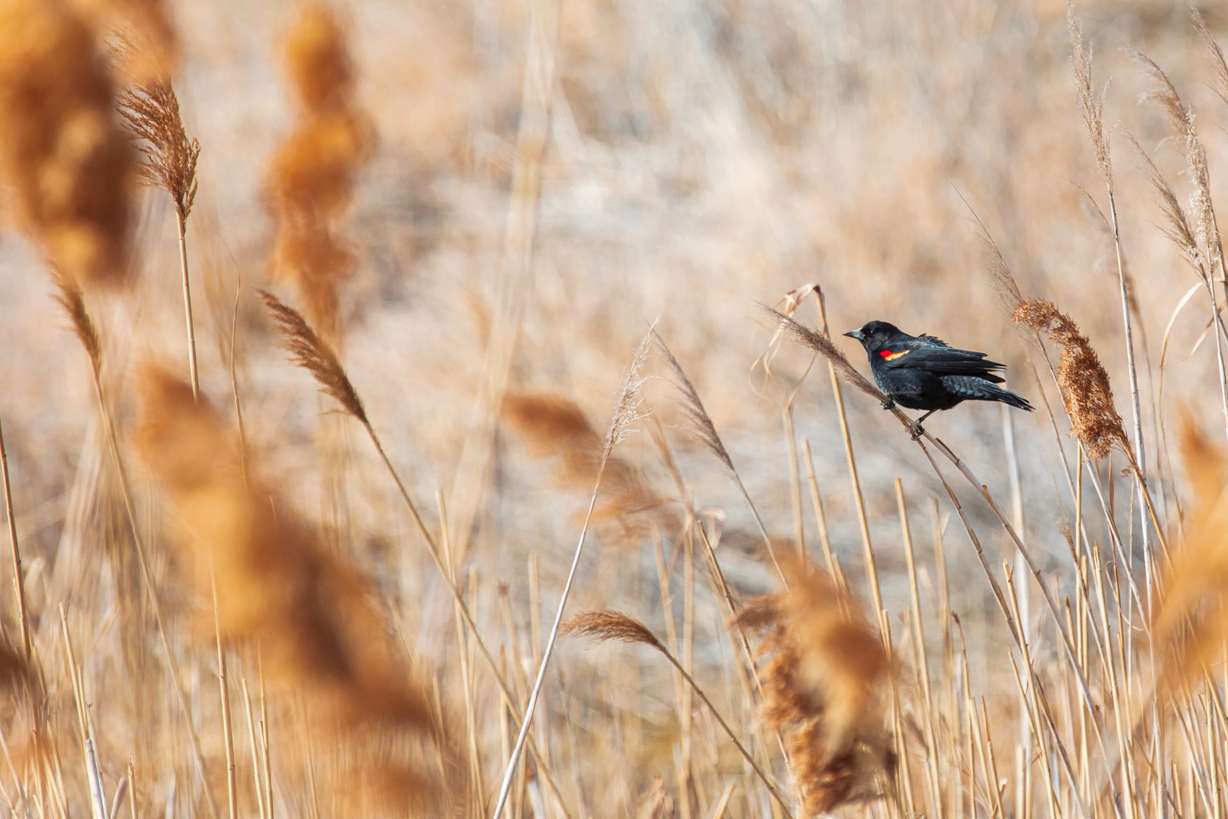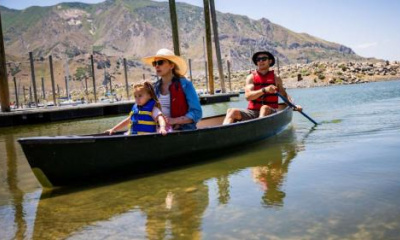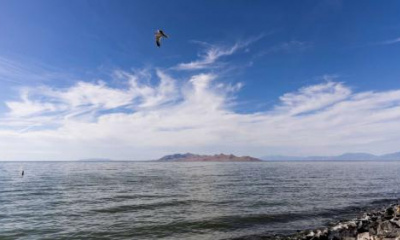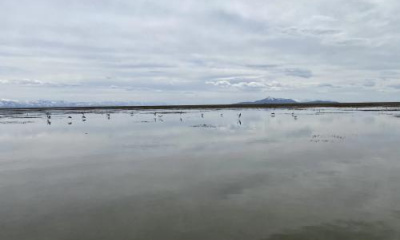FARMINGTON — The threat of the Great Salt Lake flooding is far from anyone's minds these days, especially after back-to-back years of record-setting low water levels.
But it was a different story in the 1980s. Experts sought plans to pump out lake water to quell the risk of flooding as the lake threatened to harm neighboring communities on a regular basis. The floods that did occur not only caused damage to surrounding towns and cities at the time, they ultimately ushered in a completely new headache for the Great Salt Lake ecosystem once the water subsided.
The rising salty water killed off native vegetation that once surrounded the lake, and phragmites — an invasive reed species that can grow up to 15 feet in height — slipped in at some point and took over, said Karin Kettenring, a professor of wetland ecology at Utah State University's College of Natural Resources.
"Phragmites is successful because it does well in disturbances, so that means areas where there is a lot of light and a lot of the other plants have been removed," she explains. "So basically there was this vast area that was largely void of vegetation where phragmites were able to seed and grow. ... It can also handle pretty salty conditions."
Decades after the plant began to take over, experts are still fighting back.
Kettenring, one of the state's leading phragmites experts, helped gather a few dozen land managers, scientists, consultants and wetland enthusiasts to Farmington Bay on a recent hot, sunny September day for a field tour of one of the lake's ecosystems. The event served as a discussion on what is working and what still needs to be done in the effort to remove phragmites so they can be replaced with native plants.
It's a practice that has existed for well over a decade now, but a fight that is far from being over.
"We still see a lot of mortality, a lot of death of the seeds and plants that we are putting out there," she concedes.
The problem with phragmites
Phragmites are a Great Salt Lake ecosystem troublemaker for several reasons since emerging in the 1980s. First, they produce millions of seeds, but these seeds really aren't a source of food for a vast majority of the estimated 10 million migratory birds that use the lake ecosystem every year. Second, the species doesn't attract the types of bugs that the birds feast on in the spring, either.
"It takes over the native vegetation that a lot of the wildlife relies on in these wetlands for food," says Chad Cranney, the division's assistant wildlife manager and the coordinator of the division's phragmites control program. "It's the food they've grown up with for centuries — thousands of years — and phragmites has taken that stuff over."
It's a physical barrier of sorts, too — dense and tall like a bamboo forest. This makes it a tricky plant for wildlife and people to navigate through, while it also boxes out any native species that do benefit the ecosystem.
It can also take up "a fair amount of water" because of its size. This is potentially up to double the amount of water native vegetation might need, Kettenring adds. It isn't a big factor in the lake's record low levels, but it could be one contributor to the problem. And as the lake dries, its ability to thrive in disturbances is allowing it to take up space in the dried lakebed.
The plant species even alters the soil levels to match its needs, Cranney points out. A Utah State University study published earlier this year also found that phragmites seed contained high concentrations of lead and mercury likely absorbed from toxins in the lakebed.
Finally, all these phragmites seeds spread almost as rapidly as dandelion seeds do, which is also how the species quickly dominated the Great Salt Lake ecosystem. Phragmites accounted for about 23,000 acres surrounding the lake by 2010. Kettenring says it's unclear how much the species accounts for now other than the species is very much a part of the ecosystem today.
In short, it's a nightmare for the Great Salt Lake ecosystem.
Combatting phragmites
This is why experts are fighting back. The Utah Division of Wildlife Resources, for instance, began a program in 2006 that seeks to remove as many phragmites plants as possible, though it's been a daunting task given how quickly the species can spread in Utah's environment.
"We use every tool we can in our toolbox, really," Cranney says. "We go after this plant with herbicides, with fire (and) by mechanical means — mowing it and rolling it. We also graze it with cattle and use different water management strategies, as well."
Other state and local agencies, as well as educational institutions, nonprofit organizations and volunteer groups, have helped in more recent years, especially with the other growing troubles with the Great Salt Lake. These agencies and organizations have retooled their methods, as well.
Herbicides mixed with tactics to cut down or remove dead stock have emerged as one of the best practices in handling phragmites today, according to Kettenring. This prevents millions of seeds from spreading while also removing the plant's physical barrier in the ecosystem.
his month's field tour served as a remember to keep the fight against phragmites going, especially as the Great Salt Lake struggles. It's a fight that must happen annually because of how prolific it can get in just one year.
Future problems for native plants
Yet, even after removing phragmites, the effort to restore native plants continues to be a struggle. Hotter and drier summers, which has been the case in Utah over the past two decades, are making those efforts increasingly difficult, as are one of the biggest contributors to the Great Salt Lake's demise: upstream water diversions.
Plants need water and they simply aren't getting enough from the sky or the lake's tributaries because of upstream water diversions, especially in the late summer toward the end of the irrigation season, Kettenring explains. This is leading experts to be creative with their solutions.
"We're looking at different ways to reintroduce these native species and trying to look at things like which plants do best under these harsh conditions, which ones can deal with the drought (and) which ones can compete against phragmites," she said, pointing to pickleweed as one plant that has worked in places.
These solutions do come with their own logistical difficulties. Native wetland seeds, for example, aren't necessarily easy to find. The market can be expensive too, especially compared to rangeland seeding. The conditions also need to be just right to plant, meaning not too dry and not too wet. It can also be a struggle to find ways to distribute tons of seeds over vast marshy wetlands, Kettenring notes.
Regardless of all the challenges, experts say it's work they plan to keep doing for years to come. They have welcomed the growing collaboration, resources and knowledge that have emerged over the span of nearly two decades to address problems associated with phragmites.
"It's pretty cool to see all these people coming together trying to learn what needs to be done and going out there and actually doing it," Cranney says. "It's a battle and it's going to take even more time — even though we've been working on this since 2006. We're just going to have to continue to work on it."








